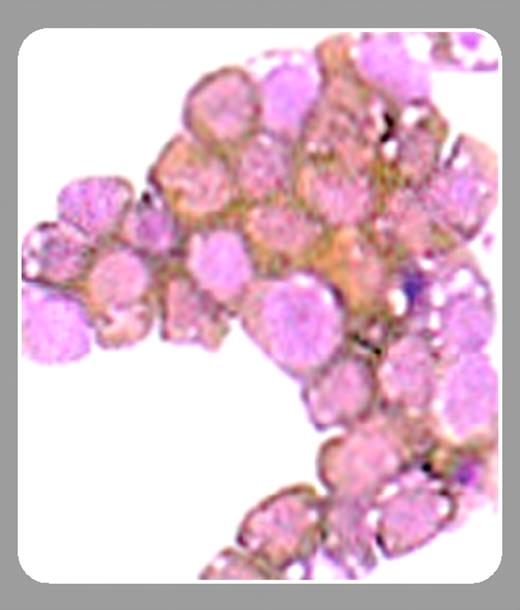A central issue in cancer research is the identification of molecular mechanisms favoring indefinite proliferation and preventing terminal differentiation. In Friend murine leukemia virus (F-MLV)-induced erythroleukemia, overexpression of the ETS-related transcription factor FLI-1 has been identified as an early step during tumorigenesis.
By successfully applying differential display, Lebigot and colleagues (page 4555) identify the Src-like adaptor protein (SLAP) as an important target gene elevated upon FLI-1 overexpression. SLAP lacks known enzymatic activity, but contains Src homology 2 (SH2) and SH3 domains with strong homology to those of Src kinase family members. Recently, SLAP was identified as a negative regulator of T-cell receptor signaling specifically affecting nuclear factor of activated T cells (NFAT), activator protein 1 (AP-1), and interleukin-2-dependent transcription.1 Now Lebigot and colleagues show that in the erythroid system, increased expression of SLAP in FLI-1-transformed erythroblasts is connected to impaired signal transduction through the erythropoietin receptor (EpoR), a key regulator of definitive erythropoiesis. The EpoR is a member of the hematopoietic cytokine receptor family and has been shown to critically regulate proliferation as well as terminal differentiation of erythroid progenitor cells.2 It is demonstrated that SLAP binds to the tyrosine phosphorylated as well as the unphosphorylated EpoR and thereby modulates signal transduction through the EpoR. How SLAP impairs signaling through the EpoR remains to be clarified at the molecular level, but it is shown that increased levels of SLAP specifically attenuate signal transducer and activator of transcription 5 (STAT5) activation and up-regulation of Bcl-XL gene expression, whereas activation of the mitogen-activated protein (MAP) kinase signaling cascade is not affected. It was shown previously that the Bcl-XL gene expression is increased at late stages of erythroid differentiation coinciding with the induction of hemoglobin synthesis and is essential for erythroid differentiation since its absence results in hemolytic anemia.3 The negative regulatory adaptor protein SLAP physically interacts with the EpoR, and increased levels of SLAP suppress the expression of antiapoptotic genes and interfere with late steps of erythroid differentiation. A similar negative regulatory mechanism has been proposed for the adaptor proteins of the suppressor of cytokine signaling (SOCS) family that interfere with the activation of the central tyrosine kinase and/or block specific tyrosine residues within the receptor and thereby impair signaling through the EpoR.4 Thus, a common theme is emerging, pointing to the importance of negative feedback loops in controlling the balance between proliferation and terminal differentiation.
By connecting overexpression of the transcription factor FLI-1 as a result of retroviral integration with enhanced expression of the negative regulatory adaptor protein SLAP, which impairs specific signaling pathways emanating from the EpoR, Lebigot and colleagues identify a major molecular mechanism that could lead, in F-MLV-induced erythroleukemia, to a suppression of terminal differentiation. This suggests a novel mechanism that could be the underlying cause in other hematologic disorders and provides new possibilities for targeted intervention.


This feature is available to Subscribers Only
Sign In or Create an Account Close Modal